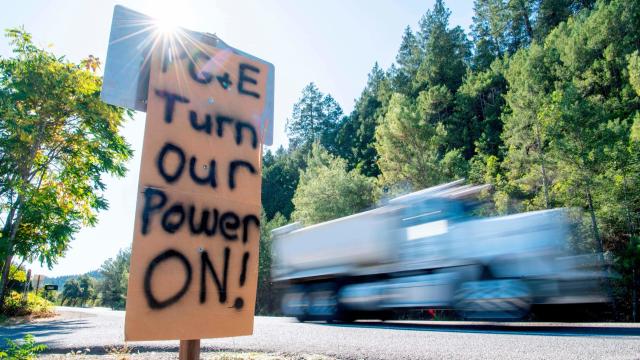In the past week, millions of Californians have lost power in rolling blackouts in response to a punishing heat wave. As much as conservatives love to yell about how this shows renewable energy isn’t reliable, that’s simply not true.
But it is true that in the transition away from fossil-based energy, batteries can play an important role, storing all that renewable-based power for when it’s needed. That can help get us off fossil fuels for good. California is about to show just what that future looks like at this crucial time by bringing the world’s largest battery project online.
The Gateway Energy Storage project in San Diego County, run by the company LS Power Development, will store 250 megawatts of power to the state or enough to power roughly 47,500 homes. Previously, the largest battery was Australia’s 150 megawatt Hornsdale Power Reserve in South Australia, which runs on Tesla batteries.
“The deployment of the world’s biggest battery in California is another step forward, not [only] for the state to reach its goal of 100 per cent clean, renewable energy for the electric power sector, but also as an example of how fast clean peaking power can be installed,” Mark Jacobson, director of Stanford University’s atmosphere and energy program, wrote in an email.
So far, only 230 megawatts of the project’s battery cells are in operation, but the entire project is set to be fully commissioned by the end of April next year. In the future, the company said the project will store even more energy. By next summer, it aims to provide 750 megwatts of energy storage, and eventually and the storage could eventually reach 1 gigawatt.
Battery storage can handle whatever power is available and will be particularly useful for renewable energy. By smoothing the supply of renewables so they can meet peak demand when the sun isn’t shining or the wind isn’t blowing, batteries can help displace gas plants needed to quickly meet peak electricity demand.
“Batteries are becoming mainstream replacement for natural gas peaking,” said Jacobson. “Batteries are much better than natural gas because they discharge electricity faster, they do not pollute the air, they do not require continuous invasive mining for gas, and they don’t release greenhouse gases during use.”
This new battery marks a huge jump in energy storage for the state, which had some 500 megawatts of battery storage in operation at the end of last year. Yet officials say even more will be needed. California’s grid operator estimates that the state will ultimately need to bring as much as 12 gigawatts of battery storage to meet energy demand in its transition to renewable energy, in large part because wind power and solar are variable — they only produce power when conditions are right. The same is true for the rest of the world, and we’re only at the beginning of the process to build out storage. In total, 4.6 gigawatts of energy storage is expected to be built in 2020 worldwide.
Ketan Joshi, an independent energy analyst and science writer, said batteries fare well at providing short-term services, such as rapid injections of power to ward off blackouts during spikes in demand, but they alone aren’t a silver bullet for energy resilience.
“Batteries…don’t fare well when they’re treated as the sole option for integrating variable renewable energy,” he wrote in an email. That’s because while they’re getting cheaper, they’re still quite costly to build. Plus, making them requires tons and tons of energy, as well as materials which can come from questionable sources.
When batteries are brought online, Joshi also said he’d like to see them be owned by local communities, instead of by large corporations.
“This would enable increased storage capacity but deployed in a way that increasing citizen participation in climate action, increases the physical diversity of asset locations so it’s more resilient against disasters (like fires!) and increases the returns for citizens, which is good because everyone’s suffering and needs help, in 2020, and this could be a good way to assist in that,” he said.
Still, Jacobson said, this new project can play an important role in California’s renewable energy future.
“Batteries, along with other clean storage options will help world transition quickly away from fossil fuels,” he said.
Updated: 22/8/2020, 5:50 a.m. AEST: This post has been updated with additional comment from Joshi.
